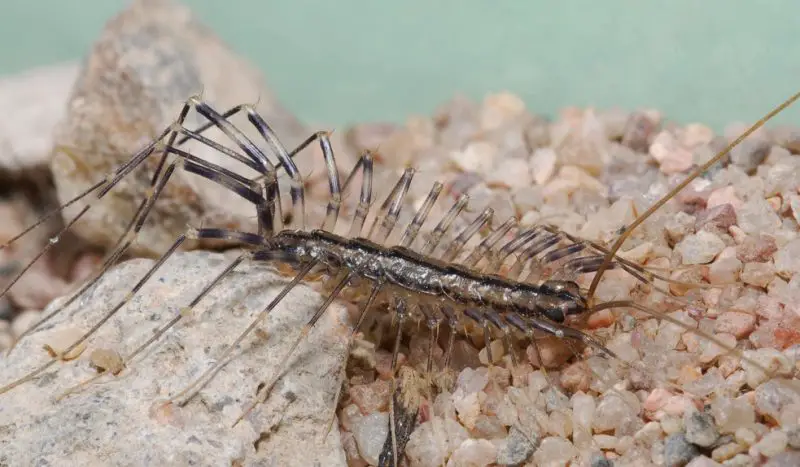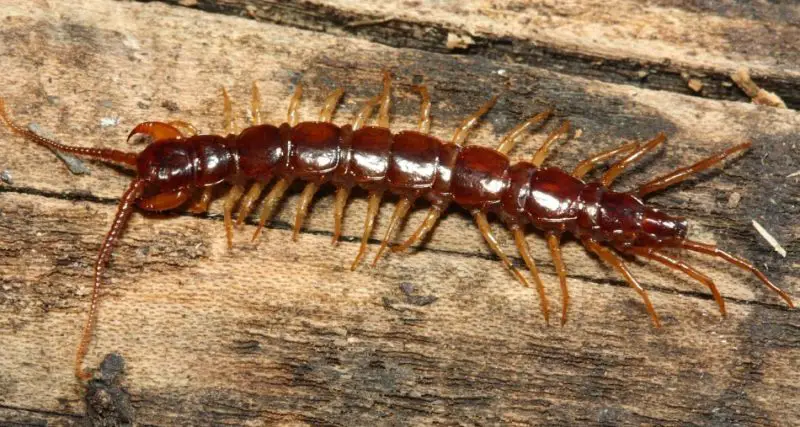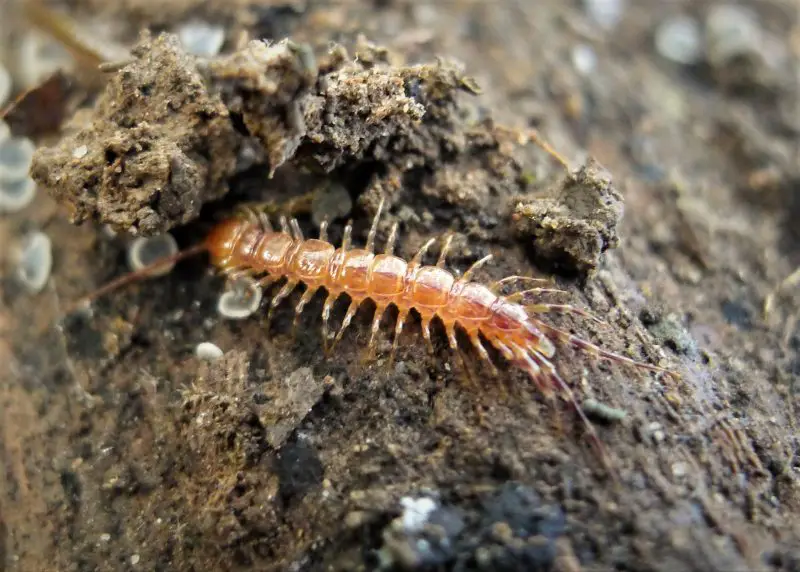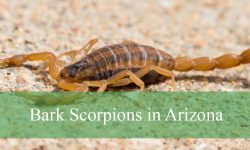If you are curious about the creepy crawlers that lurk in Ohio’s homes and forests, understanding the common centipede species is a great place to start. These fast-moving arthropods play an important role in controlling insect populations while remaining largely unnoticed.
Centipedes can be identified by their body shape, leg length, and habitat preferences. Some species, like the House Centipede (Scutigera coleoptrata), are commonly found indoors, while others, such as the Flat-backed Stone Centipede (Lithobius forficatus), prefer damp soil and leaf litter outdoors.
Knowing where and when centipedes are most active can make observing them easier and safer. These creatures are primarily nocturnal and favor moist environments, emerging at night to hunt insects and other small invertebrates.
Different Types of Centipedes Found in Ohio
House Centipede (Scutigera coleoptrata)

The House Centipede is easily recognized by its elongated, flattened body and extremely long, delicate legs, which give it an almost spider-like appearance. Its body usually ranges from 25 to 35 mm in length, with a yellowish-gray color and three dark dorsal stripes running along its back.
If identifying this species, note its 15 pairs of very long legs that move rapidly, allowing it to chase and capture prey with remarkable speed. Its antennae are also long and sensitive, helping it detect vibrations in its environment.
The venom of the House Centipede is mild to humans, primarily used to immobilize its prey, which includes small insects like cockroaches, silverfish, and dust mites. Bites to humans are rare and generally harmless.
In Ohio, House Centipedes are commonly found indoors, especially in basements, bathrooms, and closets, where conditions are dark, damp, and sheltered. They can also occasionally be spotted outdoors under stones, logs, or leaf litter, particularly in moist environments.
Flat-backed Stone Centipede (Lithobius forficatus)

The Flat-backed Stone Centipede has a slightly flattened, brown body with 15 pairs of legs, typically growing to about 25 mm in length. Its hardened exoskeleton provides protection while it moves under stones or leaf litter.
If identifying this centipede, observe the parallel-sided body, darker head, and prominent antennae, which it uses to navigate in low-light conditions. Its body segments are clearly visible, giving it a distinct “flat-backed” appearance.
The venom of Lithobius forficatus is effective for subduing small soil-dwelling invertebrates but poses no significant risk to humans. Its jaws can pinch, causing minor discomfort if handled.
In Ohio, this species favors moist microhabitats such as under rocks, decaying wood, and leaf litter in forests or garden areas. It is primarily nocturnal, emerging at night to hunt smaller arthropods in the soil.
Brown Centipede (Geophilus spp.)

Brown Centipedes are long, slender, and dorsoventrally flattened, with a body that can reach 50 mm or more, depending on the species. They have numerous segments, each bearing a pair of legs, giving them a worm-like appearance.
If identifying Geophilus species, look for uniform brown coloration, numerous leg pairs, and a tapered body that allows it to burrow efficiently through soil and leaf litter. Antennae are short but sensitive, aiding in navigation.
The venom of Brown Centipedes is mild, sufficient to immobilize tiny soil invertebrates but harmless to humans. They are aggressive hunters for their size, preying on insects, mites, and other small soil fauna.
In Ohio, Brown Centipedes prefer damp soil, decaying leaves, and under logs or stones. They are rarely seen on the surface during the day, emerging mostly at night to forage in moist microhabitats.
Coastal Centipede (Scolopendra spp.)

Coastal Centipedes are among the largest centipedes, with flattened bodies that can reach 100 mm or more. They often display striking color patterns, which can vary by species within Scolopendra.
If identifying this centipede, observe its robust, segmented body, prominent antennae, and large forcipules (venom claws) at the head used for hunting. Its size and coloration make it unmistakable compared to smaller local centipedes.
The venom of Coastal Centipedes is strong enough to immobilize large insects and small vertebrates. While bites to humans are painful, they are rarely medically serious, causing localized swelling and discomfort.
In Ohio, Scolopendra species inhabit coastal areas, marshes, or damp forests, often hiding under rocks, logs, or debris. They prefer humid environments where they can hunt actively during the night.
Striped Centipede (Lithobius variabilis)

The Striped Centipede is a medium-sized centipede with a slightly flattened, elongated body, typically measuring 20–30 mm in length. Its most distinctive feature is the subtle longitudinal stripes along its brown exoskeleton, giving it a “striped” appearance that aids in camouflage among leaf litter and decaying wood.
If identifying Lithobius variabilis, note the 15 pairs of legs, short but sharp antennae, and segmented body with a hardened exoskeleton. Its legs are well-adapted for quick, agile movement, allowing it to hunt effectively in tight spaces under stones or logs.
The venom of the Striped Centipede is primarily used to subdue small invertebrates such as insects, spiders, and mites. It poses no significant threat to humans, though a pinch from its jaws may cause minor irritation or discomfort.
In Ohio, Striped Centipedes are commonly found in moist, shaded environments such as forest floors, under rocks, decaying logs, and leaf litter. They are nocturnal hunters, emerging at night to search for prey, and play an important role in controlling soil-dwelling insect populations.
FAQs About Centipedes in Ohio
What types of centipedes are most common in Ohio?
The most common centipedes in Ohio include the House Centipede (Scutigera coleoptrata), Flat-backed Stone Centipede (Lithobius forficatus), Brown Centipede (Geophilus spp.), Coastal Centipede (Scolopendra spp.), and Striped Centipede (Lithobius variabilis). House Centipedes are frequently found indoors, while the others are more common outdoors under rocks, logs, and leaf litter.
Are centipedes dangerous to humans?
Most centipedes in Ohio are harmless to humans. While larger species like Coastal Centipedes can bite if handled, their venom generally causes only mild pain or localized swelling. Smaller species, including House Centipedes and Brown Centipedes, rarely bite and primarily hunt insects and other small arthropods.
Where can I find centipedes in Ohio?
Centipedes prefer damp, dark, and sheltered environments. House Centipedes often appear indoors in basements, bathrooms, or closets. Flat-backed Stone, Brown, Stone, and Striped Centipedes inhabit leaf litter, soil, under rocks, and decaying wood outdoors. Coastal Centipedes are found in humid, shaded areas such as marshes, gardens, or near streams.
When is the best time to observe centipedes?
Centipedes are most active from spring through early fall, particularly during warm, humid conditions. They are nocturnal hunters, so evening and nighttime observations are the most effective. After rainfall or in moist habitats, centipedes are more likely to be seen above ground.
How do centipedes benefit the environment?
Centipedes are important predators of insects, spiders, and other small arthropods, helping to control pest populations. Their burrowing activity aerates the soil and contributes to nutrient cycling, supporting healthier ecosystems both indoors and outdoors.






